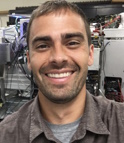
|
|
Philip Remes Ph.D., is a senior research scientist in the R&D department of Thermo Fisher Scientific in San Jose, California. He received his Ph.D. in Gary Glish’s lab at the University of Chapel Hill, North Carolina, where he worked on quadrupole ion trap and mass filter instrumentation. At Thermo, he worked with Jae Schwartz on instrument control software, ion trap analyzers, detectors and simulations for the LTQ Velos platform. Later he did similar work as a part of Mike Senko’s Tribrid development team on the Fusion, Lumos, and Eclipse projects. In recent years, Philip has continued working on ion trap technology as the technical lead of the Stellar project, branching out to learn about applications and get first-hand experience in how they can benefit from improvements in hardware, instrument control, signal processing, and informatics.
|
Targeted MS/MS methods validate the retention times (RT) and dissociation fragments of compounds, store these data in a library, and perform data analysis by integrating a RT range about the LC/MS features that most closely resemble the library data. Besides being exceedingly fast, this method has the advantage of registering a measurement value even when the compound is not present.
Read More
However, integrating the proper time range is a challenging task, especially for dilution curve studies, and especially as the number of targets-per-assay increases into the >1000 range with the introduction the Thermo Scientific Stellar MS platform. Here, we evaluate a new peak-picking algorithm based on the Adaptive RT technique (Remes 2020). This algorithm is built into a Skyline external tool, and here we describe results for dilution curves for various sample types, as well as samples from a large (>1000 samples) study, with the goal of making large-scale analyte abundance measurements more reliable.
Read Less
